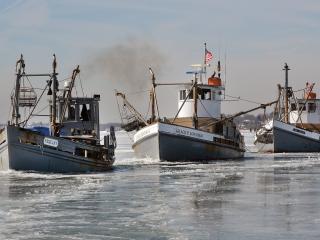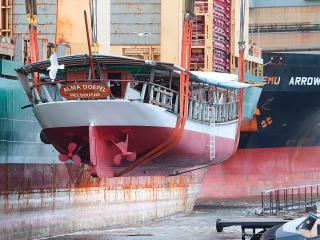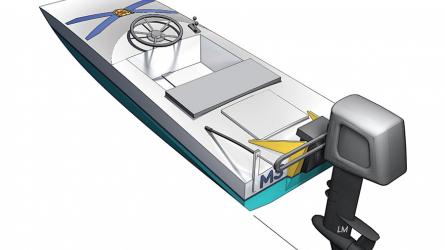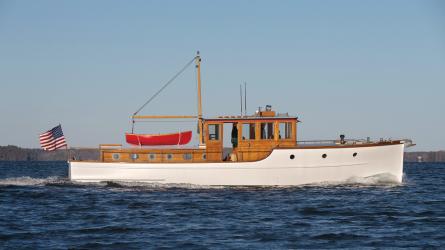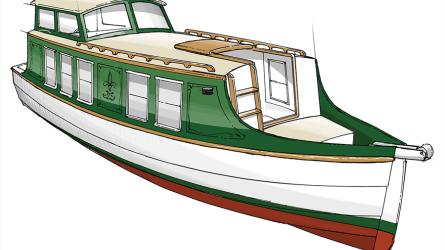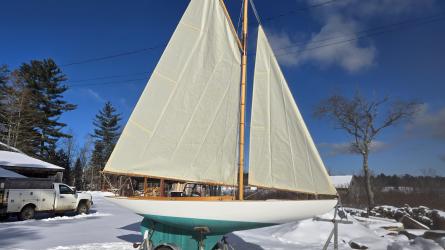March / April 2022
Electric Power for MAYFLOWER II’s Shallop
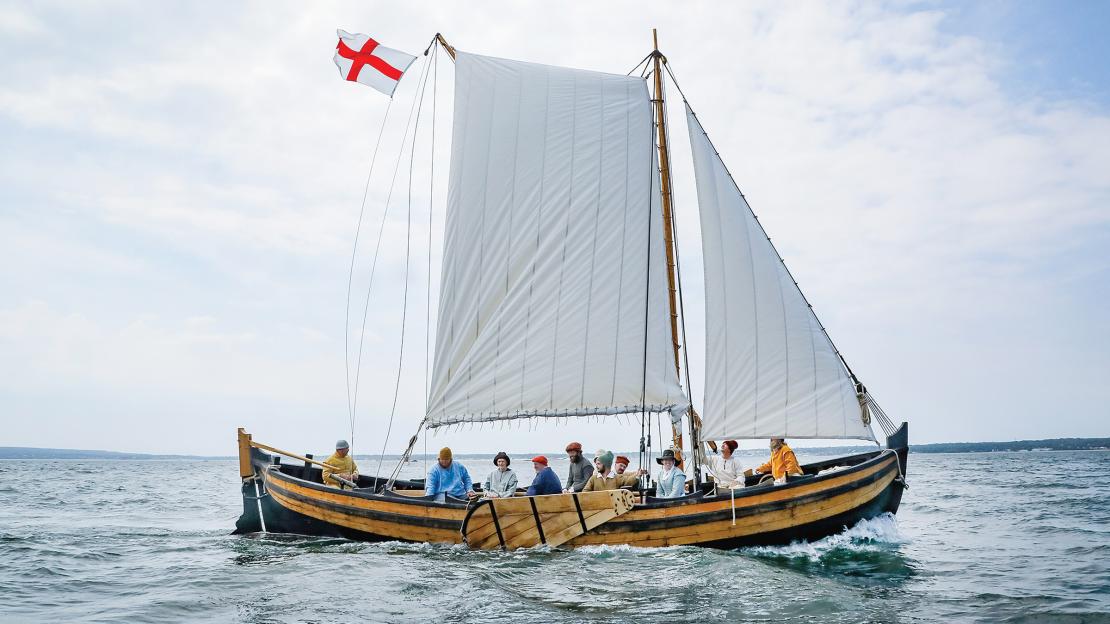
The shallop, seen here under sail, will move along under electric power at 5 knots with the throttle one-half to two-thirds open. The rudder-mounted motor has proven to be an ideal solution to the problem of maneuvering the boat in and out of busy Plymouth Harbor. Inset—The only above-water evidence of the boat’s sophisticated power plant is the cable running discreetly from the rudder to the hull.
MAYFLOWER II’s shallop, a tender to the replica vessel, was built in 1957 at Plymouth (Massachusetts) Marine Railway at the same time MAYFLOWER II herself was under construction in Brixham, England. It is said that the shallop’s building crew was anxiously monitoring MAYFLOWER II’s progress across the Atlantic as they were frantically trying to finish their project so the shallop could meet MAYFLOWER II when she arrived. They succeeded, and MAYFLOWER II and her shallop became permanent exhibits at the living history museum Plimoth Plantation (renamed Plimoth Patuxet Museums in 2020) in Plymouth, Massachusetts.
The use of the shallop waned over the years as Plymouth Harbor became increasingly congested, thus making it difficult to row a vessel with a 10' beam and 14' sweeps to open water. Because of this, Whit Perry, director of maritime preservation and operations at Plimoth Patuxet, and the shallop’s captain, sought a way to power the shallop to and from the dock safely and consistently. He brought the problem to the crew at Lowell’s Boat Shop in Amesbury, Massachusetts, where I am the executive director, and we discussed several options, including installing a small inboard diesel engine or fitting an outboard motor in a well.
To read the rest of this article:
Click the button below to log into your Digital Issue Access account.
No digital access? Subscribe or upgrade to a WoodenBoat Digital Subscription and finish reading this article as well as every article we have published for the past 50-years.
ACCESS TO EXPERIENCE
Subscribe Today
To read articles from previous issues, you can purchase the issue at The WoodenBoat Store link below.
 Purchase this issue from
Purchase this issue from
